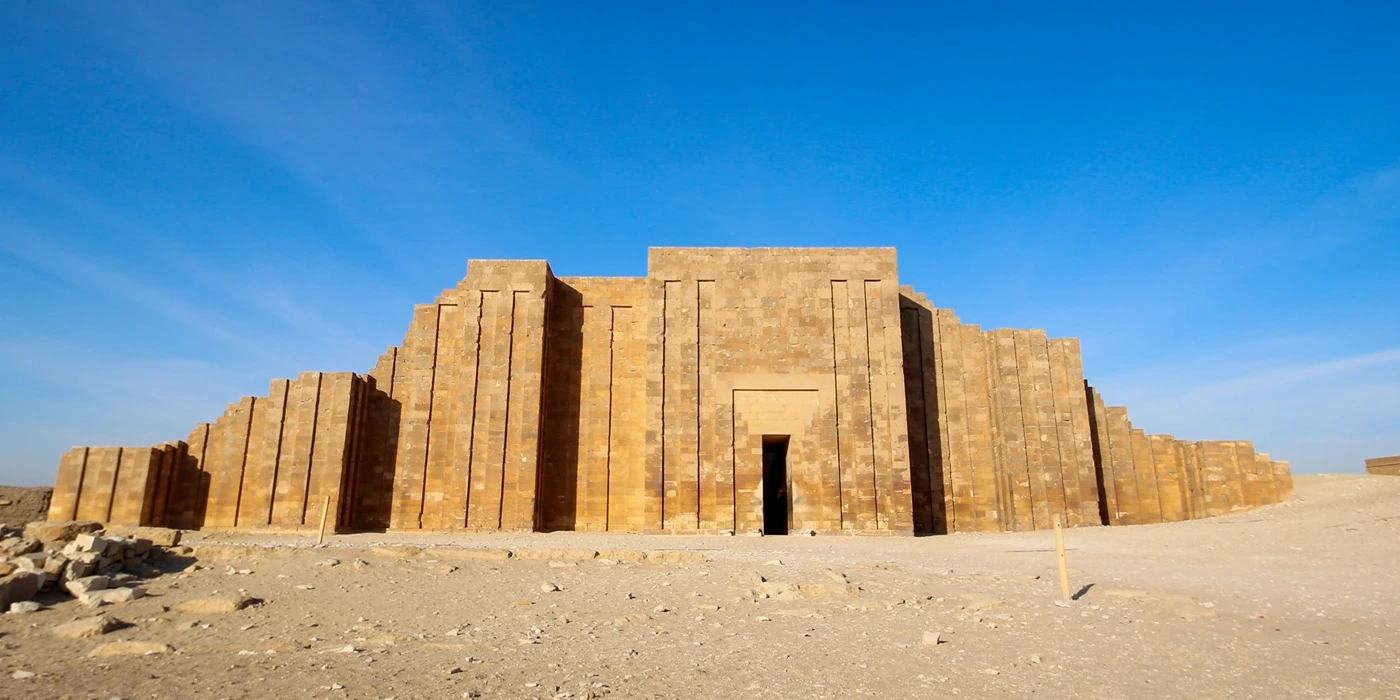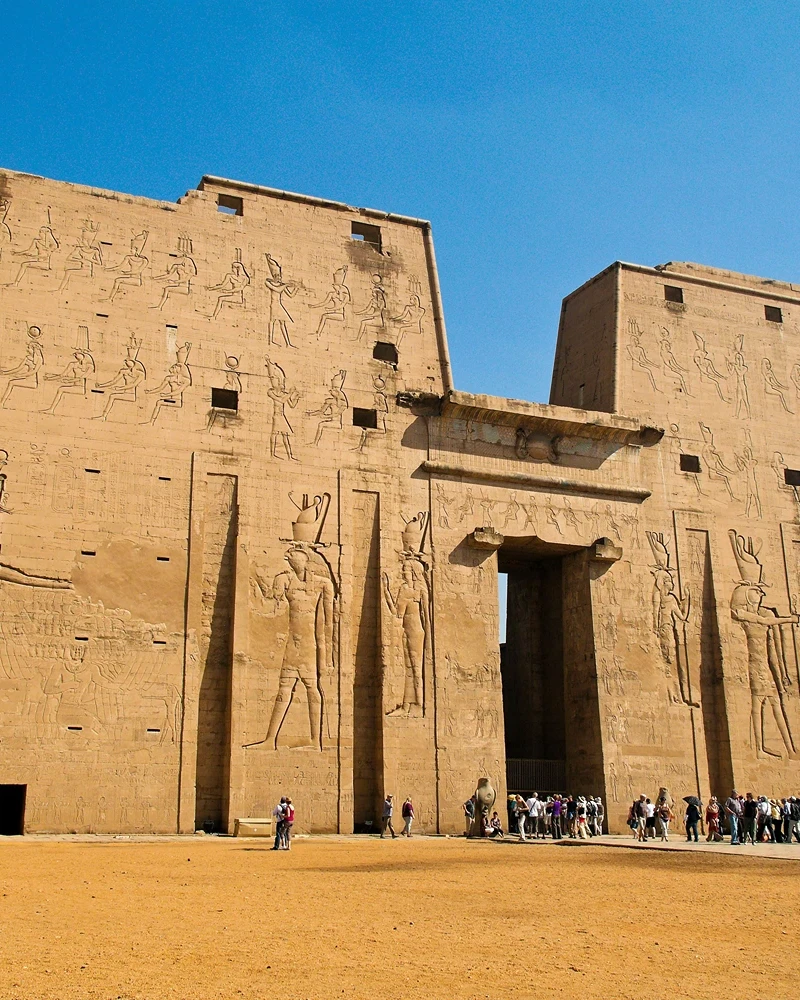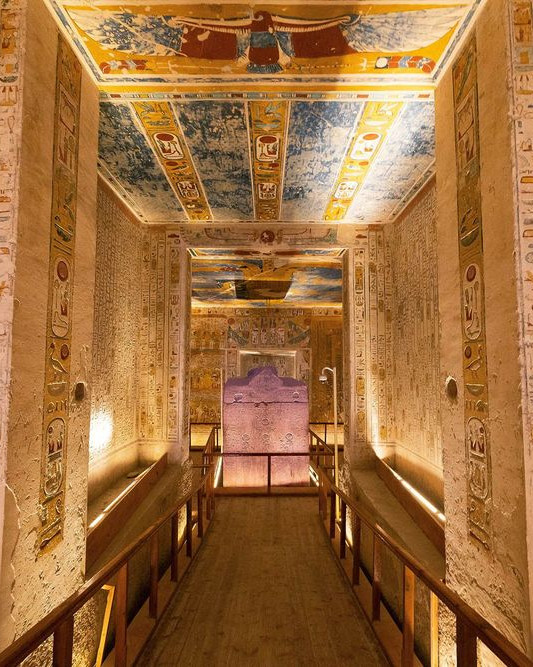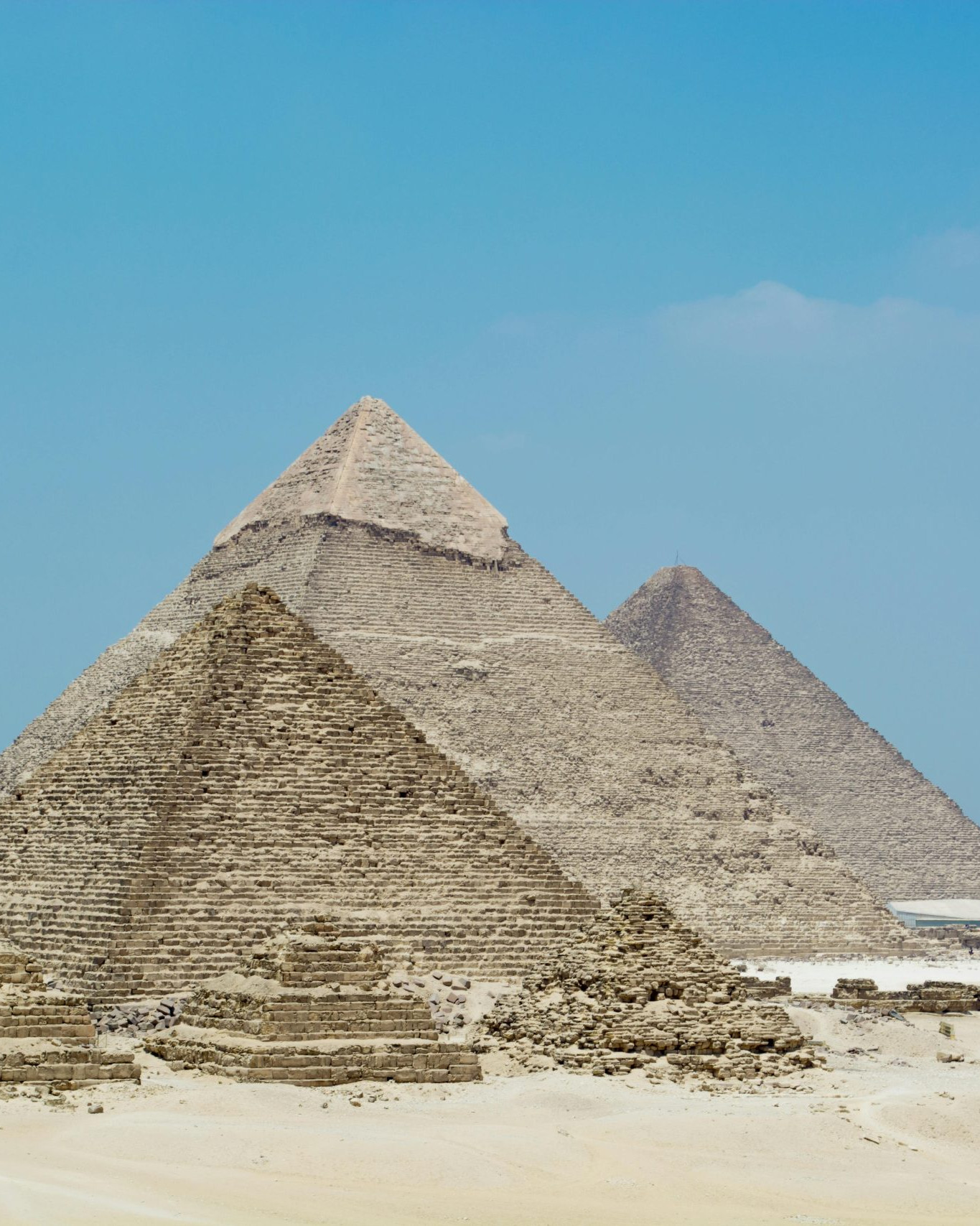Are you fascinated by Egypt’s ancient mysteries but tired of the same old stories about the pyramids at Giza? Welcome to Saqqara, Egypt’s timeless necropolis that promises to captivate your imagination with its less publicized yet profoundly significant secrets. Nestled near Cairo, Saqqara served as a burial ground for thousands of years, housing countless tombs, royal pyramids, and shafts from various historical periods. This article will guide you through Saqqara’s rich history, unique architectural marvels, and essential details for planning an unforgettable visit. Explore why Saqqara is not just a burial site but a testament to Egypt’s enduring legacy.
Overview of Saqqara: Egypt’s Ancient Necropolis
Saqqara, an ancient necropolis in Egypt, has been a burial ground for thousands of years. Located near Cairo, it encompasses thousands of tombs, royal pyramids, and shafts from various historical periods. Saqqara’s extensive use throughout millennia underscores its historical significance and role in Egyptian culture. The site is a testament to the country’s architectural and cultural evolution, attracting historians and tourists alike.
Historically, Saqqara is significant due to its continuous use as a burial site over several dynasties. It is home to the Step Pyramid of Djoser, the first pyramid ever constructed, marking the beginning of monumental stone architecture in ancient Egypt. The necropolis also includes tombs from the Old Kingdom, Middle Kingdom, New Kingdom, and Late Period, offering a comprehensive view of ancient Egyptian burial practices and architectural styles.
Key features of Saqqara include:
- Step Pyramid of Djoser: The oldest pyramid in Egypt, designed by Imhotep.
- Pyramid of Unas: Noted for its Pyramid Texts, the oldest known religious texts.
- Serapeum: Burial site of the sacred Apis bulls.
- Tomb of Ti: Known for its intricate carvings and depictions of daily life.
- Imhotep Museum: Houses artifacts excavated from the necropolis.
When planning a visit to Saqqara, using a map is crucial for navigating the vast site. A detailed map helps visitors locate key attractions and understand the layout of the necropolis. Given its proximity to Cairo, Saqqara is accessible for day trips, making it an essential destination for anyone interested in exploring Egypt’s rich historical legacy.
The Step Pyramid of Djoser: Architectural Marvel
The Step Pyramid of Djoser, located in Saqqara, stands as a milestone in ancient Egyptian architecture. Designed by the architect Imhotep, this pyramid marked the beginning of the Pyramid Age. Originally conceived as an 8-meter-high mastaba, it was later expanded into a six-tiered structure, setting a precedent for future pyramid constructions.
Architecturally, the Step Pyramid is remarkable for several reasons. It has a base measuring 121 by 109 meters and reaches a height of 62 meters. The complex includes a 10-meter-high enclosure wall, providing a secure and imposing perimeter. The entrance passage is a mere 1 meter wide, leading to an extensive network of underground tunnels and chambers. One of the most notable features is the presence of the oldest known stone columns, which add both structural support and aesthetic value.
| Feature | Details |
| Architect | Imhotep |
| Base Dimensions | 121 by 109 meters |
| Height | 62 meters |
| Enclosure Wall Height | 10 meters |
The historical significance of the Step Pyramid cannot be overstated. It symbolizes the inception of monumental stone architecture in Egypt. Imhotep’s role was pivotal; his innovative design transformed traditional mastaba tombs into a towering pyramid. This architectural feat not only served as a royal tomb but also set the stage for future advancements in pyramid construction, influencing subsequent generations of builders.
Tombs and Burial Practices in Saqqara
Saqqara’s necropolis is a vast burial ground that spans several periods of ancient Egyptian history. It contains thousands of tombs, each reflecting the architectural styles and burial customs of its time. Among these, the burial chamber of the Step Pyramid stands out, situated almost 30 meters below ground and housing a granite sarcophagus along with the remains of several mummies. Saqqara’s tombs range from simple pit graves to elaborate mastabas and pyramid complexes, showcasing the evolution of burial practices over millennia.
The burial practices at Saqqara were deeply rooted in ancient Egyptian beliefs about the afterlife. Mummification was a common practice aimed at preserving the body for its journey to the afterlife. The tombs often contained not just the mummified remains but also a variety of goods, such as jewelry, food, and statues, intended to provide for the deceased in the next world. The underground tombs were particularly notable for their complexity, often featuring intricate tunnels and chambers filled with treasures.
Notable tombs and their treasures at Saqqara include:
- Tomb of Ti: Known for its detailed carvings depicting daily life.
- Tomb of Mereruka: Features 32 chambers and extensive wall reliefs.
- Tomb of Kagemni: Noted for its scenes of fishing and farming.
- Tomb of Ptahhotep: Contains vivid depictions of agricultural activities.
- Pyramid of Unas: Houses the oldest known Pyramid Texts.
- Tomb of Mehu: Renowned for its colorful wall paintings.
- Tomb of Horemheb: Includes military scenes and religious texts.
The Heb-Sed Court, located within Saqqara, holds significant historical importance. It was used for the Heb-Sed festival, a rejuvenation ceremony for the king, reaffirming his strength and divine right to rule. This ceremonial facility, along with other structures, underscores the complex’s role not only as a burial ground but also as a center for royal rituals and religious activities. The combination of tombs and ceremonial spaces makes Saqqara a comprehensive site for understanding ancient Egyptian culture and burial practices.
Major Attractions in Saqqara: Beyond the Step Pyramid
Saqqara offers a wealth of attractions beyond the iconic Step Pyramid. The Serapeum, a burial site for the sacred Apis bulls, stands out as a key highlight. This underground complex features massive granite sarcophagi and elaborate carvings, making it a unique component of Saqqara’s necropolis. Additionally, various temples in the area provide insight into ancient Egyptian religious practices. These temples, often adorned with intricate reliefs, were centers of worship and ceremonial activities. The museums at Saqqara are another essential stop, housing artifacts unearthed from the site. These collections offer a comprehensive view of the material culture of ancient Egypt, including statues, pottery, and everyday items.
The Saqqara Sphinx is another significant landmark. Unlike its more famous counterpart in Giza, the Saqqara Sphinx offers a different perspective on ancient Egyptian statuary. This sphinx is smaller but equally impressive, showcasing the artistic skills of the craftsmen of that era. Its presence adds another layer to the rich tapestry of Saqqara’s historical and cultural significance.
Top attractions in Saqqara include:
- Serapeum: Burial site for the sacred Apis bulls, featuring massive granite sarcophagi.
- Various Temples: Centers of worship and ceremonial activities adorned with intricate reliefs.
- Museums: House artifacts from the site, including statues, pottery, and everyday items.
- Saqqara Sphinx: A smaller but equally impressive counterpart to the Giza Sphinx.
- Tomb of Ti: Known for its detailed carvings depicting daily life.
These attractions offer a holistic view of Saqqara, making it a must-visit for anyone interested in ancient Egyptian history and culture.
Saqqara Today: Visiting and Exploring
Saqqara, located near Cairo, offers a gateway to exploring Egypt’s ancient history. Reaching Saqqara is straightforward, as it is accessible via car or organized tours from Cairo. The site is expansive, so allocating a full day for exploration is advisable. Upon arrival, visitors will encounter multiple checkpoints at the entrance, adding to the time required to start the visit. While self-drive tours are possible, they are generally less advisable due to the complexity of navigating the site and understanding its historical context.
Security at Saqqara has been a significant concern, especially since the 2011 revolution, which saw instances of looting. As a result, security measures have been heightened. Visitors will notice a strong security presence, including multiple checkpoints and restricted areas. Guided tours are highly recommended not only for safety reasons but also to fully appreciate the historical significance of the site. Knowledgeable guides provide invaluable insights into the history, architecture, and cultural relevance of Saqqara, making the visit more enriching.
Tips for visitors:
- Book a guided tour: Enhances understanding and provides security.
- Allocate a full day: The site is large and requires time to explore thoroughly.
- Bring water and snacks: Limited amenities are available on-site.
- Wear comfortable walking shoes: The terrain can be uneven.
- Check for any travel advisories: Stay updated on the security situation.
For those seeking a more curated experience, Xpat Journeys offers specialized travel plans and insights into visiting Saqqara. Their expertise in organizing tours ensures that visitors can explore the site comfortably and safely. With detailed itineraries and knowledgeable guides, Xpat Journeys helps in making the most out of the Saqqara visit, providing a seamless blend of education and adventure.
Recent Discoveries and Media Coverage of Saqqara
Netflix has recently released the trailer for its new film, Unknown: The Lost Pyramid, set in Saqqara. This film is part of a documentary series called Unknown, which delves into historical and archaeological mysteries. The documentary has garnered significant attention, bringing Saqqara back into the spotlight. The focus on Saqqara in this series underscores the site’s enduring importance and the fascination it holds for both historians and the general public. By highlighting the work of archaeologists and the discoveries made at Saqqara, the documentary aims to educate viewers on the complexities and marvels of this ancient necropolis.
Recent excavations at Saqqara have yielded remarkable findings, adding to the site’s rich historical tapestry. Archaeologists have uncovered new tombs and artifacts, providing further insights into the burial practices and daily lives of ancient Egyptians. These discoveries continue to shape our understanding of Saqqara’s historical context and its significance as a burial site over millennia.
Notable recent finds include:
- Newly discovered tombs: Adding depth to our understanding of burial customs.
- Artifacts: Including pottery, jewelry, and statues.
- Hieroglyphic inscriptions: Offering insights into the lives of those buried.
- Mummified remains: Providing data on ancient Egyptian mummification techniques.
- Ancient tools: Shedding light on the construction methods used.
These recent discoveries and the media attention they have attracted highlight Saqqara’s ongoing relevance in the field of archaeology. As excavations continue, the site promises to reveal even more about ancient Egyptian civilization, captivating both experts and enthusiasts alike.
Final Words
In exploring Saqqara’s vast necropolis, the architectural marvel of the Step Pyramid of Djoser, and the intricate tombs and burial practices, the historical significance of this ancient site becomes clear.
The major attractions, including the Serapeum and Saqqara Sphinx, offer additional depth to any visit.
With practical information on travel and security considerations and insights into recent discoveries, Saqqara stands as a remarkable testament to Egypt’s ancient past.
Embarking on a journey to Saqqara promises a richly rewarding experience for history enthusiasts and travelers alike.
Top Attractions
Why would an ancient civilization dedicate 180 years to…
Why did the ancient Egyptians choose a secluded desert…
Are the Great Pyramids of Giza merely monumental tombs, or…





